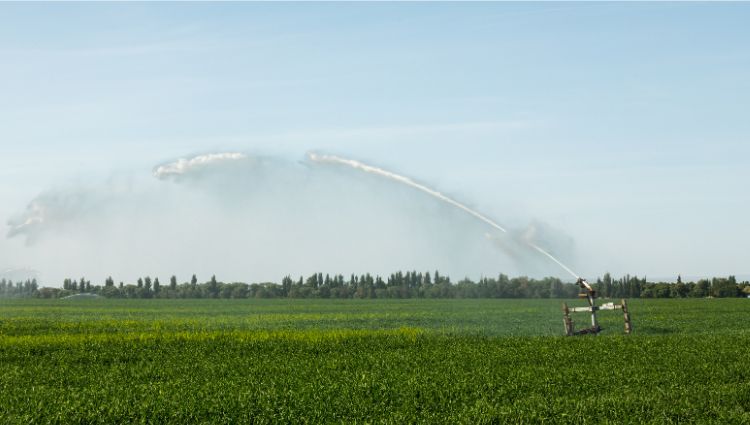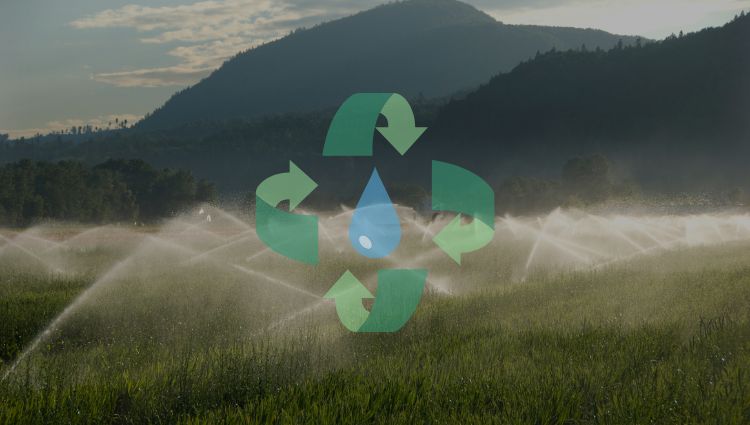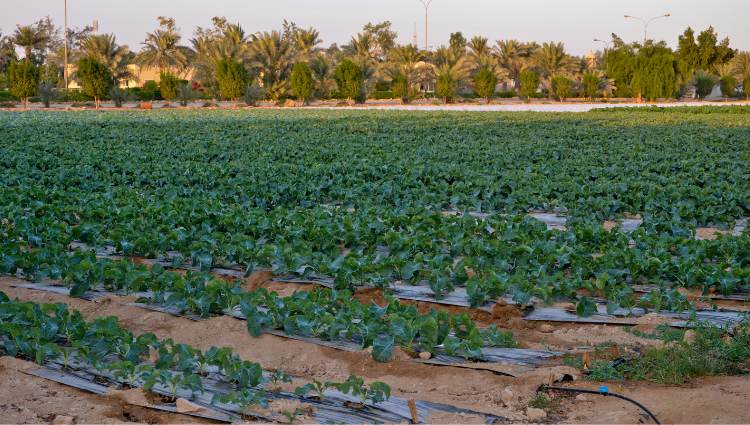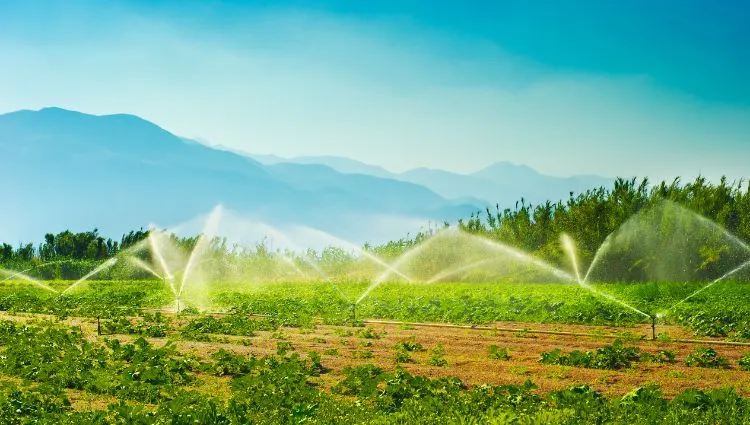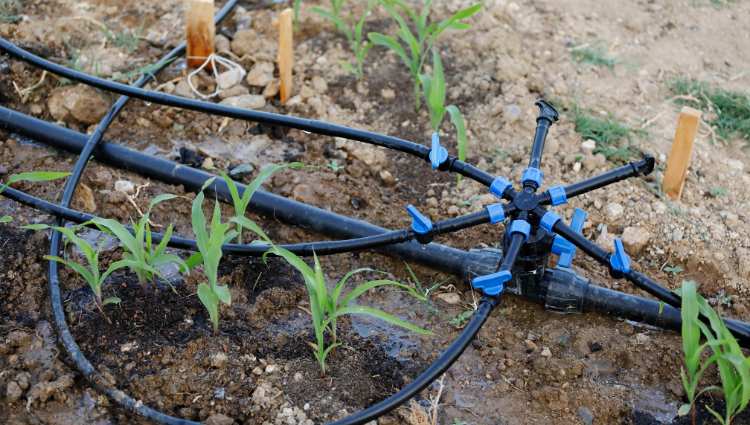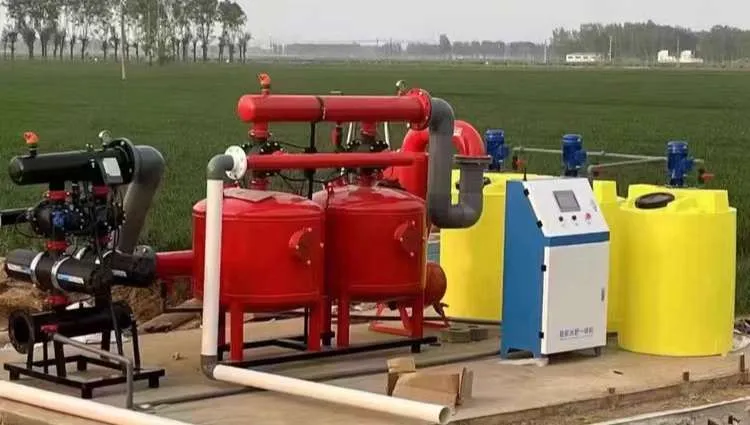Jedwali la yaliyomo
In agricultural cultivation, it is often necessary to set up an irrigation system to supply water to crops. Sprinkler irrigation is a commonly used irrigation system. Kati yao, sprinklers and rain guns are the main products.
To achieve good sprinkler irrigation results, good and suitable products are crucial. This article will mainly focus on rain gun products, explaining how to choose them when purchasing, and what factors need to be considered to avoid pitfalls.
To choose a suitable rain gun, you can consider it from two aspects: the irrigation environment and the product itself. Ifuatayo, I’ll explain each of these for you one by one.
Irrigation Environment
Different irrigation environments require different types of rain guns. The irrigation environment includes water source conditions, eneo la umwagiliaji, Aina ya mazao, upandaji wiani, nk.
Water Source Conditions
Different water sources have different flow rates and pressures. If the water source has a high flow rate, then using a high-flow rain gun will be more appropriate. On the contrary, if the water source has a low flow rate, then choose a low-flow rain gun.
The same goes for water pressure. This needs to be judged together with the water pump and the head. If a high-power water pump is needed to draw water to meet a higher head, then naturally a rain gun with higher pressure and head is also needed.
The water quality at the source is also very important. If the water contains a lot of impurities, such as large amounts of sediment, algae, nk., then a filter needs to be installed in the irrigation system to remove the impurities. Wakati huo huo, when choosing a rain gun, you must choose one with good anti-clogging performance, and the rain gun’s flow channels and nozzles should also be as wide as possible.
Irrigation Area
The size of the irrigation area directly determines the choice of rain gun in terms of range and flow rate. If the irrigation area is large, like a big farmland, then you need to choose a rain gun with a long range and high flow rate. Katika kesi hii, it’s best if the rain gun can reach a spray distance of 20–50 meters, or even longer.
If the irrigation area is small, like a small plantation, then choose a rain gun with a short range and low flow rate. These types of rain guns can have a spray distance of around 10–20 meters.
Kwa kweli, you need to first calculate the irrigation area, its length and width, and then choose a suitable rain gun based on this data.
Crop Type
Not all crops are suitable for high-flow rain guns. Kwa mfano, vegetables, flowers, and other similar crops and plants have shallow roots, are more delicate and fragile, and are more sensitive to water. If the rain gun has a large water flow and high impact force, it may damage the crops. Katika kesi hii, you should choose a rain gun that sprays evenly and gently, with low impact.
If the crops are drought-tolerant with deep roots, such as corn, Pamba, sugarcane, nk., then it’s fine to choose a rain gun with stronger spray intensity.
Upandaji wiani
If you want to make full use of the rain gun, you must consider the crop’s planting density. If the planting density is high, and you want all the crops to be able to access water, then choose a rain gun that can rotate 360 digrii.
If the planting spacing is relatively large and the density is low, then you can choose a rain gun with an adjustable angle. Katika matumizi halisi, adjusting the angle can allow for more precise irrigation and minimize water waste.
The Product Itself
When choosing a rain gun, in addition to considering irrigation conditions, you also need to pay attention to whether the product’s performance, nyenzo, quality, nk., meet the requirements.
Product Performance
The performance of the product mainly includes spraying distance, spray effect, adjustment functions, nk. Spraying distance was already mentioned above—you can refer to the size and shape of the irrigation area to choose a rain gun with a suitable spray radius. If the planting area is large, in order to cover the entire area with water, you need to choose a rain gun with a long range. If the area is not large, then choose a rain gun with a shorter range but higher precision, to avoid unnecessary water waste.
The spray effect of the rain gun also needs to be uniform; otherwise, some areas within the irrigation zone may be dry and lacking water, while others may be overwatered and even have puddles. In any case, this is not good for crop growth.
Some crops, such as flowers, seedlings, nk., have high water requirements and need an environment with higher humidity. Katika kesi hii, the rain gun’s spray effect should ideally be fine, with atomization, and the sprayed droplets should be smaller. This is more beneficial for crop absorption and also reduces the water’s impact force on the crops.
Kwa kuongeza, it’s best to choose a rain gun that allows flexible adjustment of the spray angle, so that the water can be accurately sprayed onto the irrigation area, avoiding dead zones in irrigation. The rain gun’s flow and pressure adjustment functions are also very important. Since crops have different water needs at different growth stages, adjusting the rain gun’s water flow can help achieve water-saving and precise irrigation.
Rain Gun Material
The material of the rain gun affects its service life and performance. Common materials currently include plastic, copper, aluminium aloi, stainless steel, nk. Plastic rain guns are very lightweight, kutu-sugu, and cost-effective, but their strength and durability are somewhat lower.
Metal rain guns are stronger and more durable, but also more expensive. Metal materials are also more prone to rust, so it’s best to choose rain guns that have been treated with anti-rust coating.
Users can choose a suitable rain gun material based on the actual usage environment and budget.
Rain Gun Quality
A rain gun with reliable quality will have more stable spraying performance, a lower chance of failure, and a longer service life. Kwa hivyo, it’s best to purchase rain guns from professional and reliable manufacturers. Compared to products made by small workshops, their products are more trustworthy.
Maneno ya mwisho
This article has explained how to choose a suitable rain gun from two aspects: the irrigation environment and the product itself. Kwa kweli, one more important point can be added—that is after-sales service.
Rain guns may also encounter some issues during use. Although the probability of problems and malfunctions is very low for rain guns with reliable quality, once a problem occurs, having good after-sales support and service becomes crucial.
When purchasing a rain gun, it’s necessary to understand the manufacturer’s or seller’s after-sales service content, such as product warranty period, repair terms, parts replacement, operation and maintenance guidance, nk. Njia hii, if your product has any issues, having a strong after-sales team to support and assist you can really put your mind at ease.
Mwishowe, Tafadhali niruhusu kuanzisha kampuni yetu. Rainfaun ni mtengenezaji wa bidhaa za umwagiliaji zinazoelekezwa nchini China. Tunazalisha na kuuza bidhaa kama vile Umwagiliaji wa matone na Umwagiliaji wa kunyunyiza systems. Sprinkler irrigation products are one of our main product lines, pamoja na bunduki za mvua, Vinyunyizi, Micro-Sprinklers, Na zaidi. Unaweza kupata habari Kuhusu Rainfaun na bidhaa zetu Kwenye wavuti hii.
Ikiwa ungetaka kushirikiana na sisi, unaweza Bonyeza hapa kujaza fomu.
Mwandishi: Michael
Mhariri: Michael
Mhakiki wa Yaliyomo: Michael
